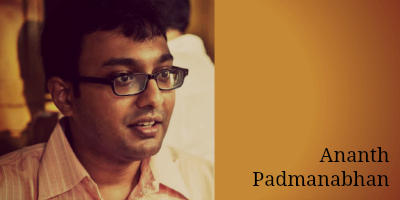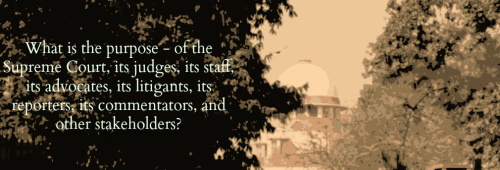A Constitution Bench of the Supreme Court has, in State of Karnataka v. Azad Coach, finally shed some clarity on the issue of when penultimate sales, that is, a sale just before the one that occasions the export of the goods from India, would be entitled to exemption from the imposition of sales tax. This decision comes about in the context of Section 5 of the Central Sales Tax Act, 1956, (“the CST Act”) and hence requires a brief analysis of this provision as introduced and subsequently amended.
Section 5 of the CST Act
This provision provides for three important things: 1) the definition of a “sale in the course of export”; 2) the definition of a “sale in the course of import”; and 3) when a penultimate sale is deemed to be a “sale in the course of export”. Of these, the first and third limbs are relevant to this analysis.
As per Section 5(1), a sale is deemed to be in the course of export either when the sale occasions such export, or the sale has taken place through the transfer of title documents after the goods have crossed the customs frontier of India.
Section 5(3) deems any sale of goods immediately prior to the sale, (“the penultimate sale”) that occasion the export of “those goods” out of the territory of India also to be a sale in the course of export if the penultimate sale took place after, and was for the purpose of complying with, the agreement or order for or in relation to such export.
The rationale for Section 5(1) stems from Article 286(1)(b) of the Constitution of India, which provides that no law of a state shall impose, or authorise the imposition of any sales tax on the sale or purchase of goods when such sale or purchase takes place in the course of export of goods, and Article 286(2), which authorises Parliament to formulate principles for determining when a sale is in the course of import or export.
Section 5(3), which was introduced only in 1976, came about as a legislative response to the Supreme Court decision in Md. Serajuddin v. State of Orissa, (1975) 2 SCC 47, where the Court had held that only the sale by the exporter, and not the penultimate sale to the exporter, would be exempt from payment of sales tax by virtue of being a sale in the course of export. The Statement of Objects and Reasons to the Amending Act of 1976 captures the special economic situation prevalent in those times when many goods could be exported only by specified agencies such as the State Trading Corporation. Moreover, many goods were being exported taking the assistance of experienced export houses.
Since the sales to these agencies and export houses were actually meant to enable the agency or export house to export those goods in compliance with an existing contract or order and were thus inextricably connected with the export of the goods, it was felt necessary to exclude them from the ambit of sales tax. This exemption would also render Indian exports competitive by not exposing them to an additional sales tax burden.
1976 to 2010: the “Same Goods” Theory
In Sterling Foods v. State of Karnataka, (1986) 3 SCC 469, the assessee sought exemption for tax on the purchase of shrimps, prawns, and lobsters that were meant for subsequent export after going through the process of cutting of heads and tails, peeling, de-veining, cleaning and freezing, relying on Section 5(3).
In this context, the Supreme Court, while allowing for such exemption, held that Section 5(3) would be attracted only where the goods purchased by an assessee for the purpose of complying with the agreement or order for or in relation to export, were the same as those exported out of the territory of India. If by reason of any processing after purchase, the identity of the goods had changed to such an extent that commercially, and from the viewpoint of people in that trade, they had transformed into a new and different kind of goods for export, the purchases of original goods made by the assessee would not be in the course of export. On the facts of this case, the Supreme Court came to the view that the processing had not resulted in the goods losing their original character.
Relying on this decision, the Revenue sought to confine the scope of Section 5(3) to cases where the same goods were involved in the penultimate sale as well as the export sale, without losing their character or identity in any manner. In Vijayalakshmi Cashew Company v. Deputy Commercial Tax Officer, (1996) 1 SCC 468, the Supreme Court upheld the denial of exemption to the sale of raw cashew nuts, which were later converted to cashew kernels and exported. The Court reasoned that the raw cashew nuts could have been used for very many purposes and the process of extracting the kernels from these cashew nuts was indeed elaborate, and hence it could not be said that the raw cashew nuts purchased in the penultimate sale were the same as those sold to the exporter, that is, the cashew nut kernels. With this decision, the “same goods” theory had gained acceptance as a precedent.
However, immediately after the decision in Vijayalaxmi Cashew Co., the Supreme Court shed some more clarity on sale in the course of import in K. Gopinathan Nair v. State of Kerala, (1997) 10 SCC 1, such clarity seemingly leading to some more confusion. This was a judgment rendered in the context of Section 5(2) of the CST Act, which dealt with sale in the course of import rather than export. The assessees here were engaged in the purchase of raw cashew nuts and export of cashew kernels after processing the raw cashew nuts. They had placed orders for import of raw cashew nuts from African countries through the Cashew Corporation of India (“the CCI”), which was a canalising agency. Pursuant to these orders, the CCI had imported these raw cashew nuts and made them available to the assessees. Consequently, the assessees claimed that the subsequent sales transactions with the other users were purchases in the course of import and hence falling outside the purview of sales and purchase tax. They contended that these local sales had occasioned the import of the raw cashew nuts from Africa and were hence, in the course of import. This contention of the assessees was rejected by the Kerala High Court, leading to an appeal before the three-judge bench of the Supreme Court. The Supreme Court confirmed the view taken by the High Court and in the process, relied on some of its earlier judgments rendered in the context of Section 5(1). According to the Court, the requirement for sale in the course of export in sub-section 5(1) was the same as the requirement in sub-section 5(2). Hence, reliance was placed on the Constitution Bench decision in Ben Gorm Nilgiri Plantations Co., Coonoor v. Sales Tax Officer, Special Circle, Ernakulam, [1964] 7 SCR 706, where the Court had held that in cases where the export was inextricably linked up with the sale so that the bond between them could not be dissociated without committing a breach of the obligations between the parties arising under statute or contract, the sale would be in the course of export.
Endorsing this test, the Supreme Court in Gopinathan Nair had taken the view that a sale in the course of import must necessarily require the concerned sale to occasion the import and the sale and the import must have an integrated and intertwined connection.
The following principles were laid down by the Court as governing the issue of when a sale would be in the course of import or otherwise, of which principles (2) and (6) are most relevant to the present discussion:
(1) The sale or the purchase, as the case may be, must actually take place.
(2) Such sale or purchase in India must itself occasion such import, and not vice versa, that is, the import should not occasion such sale.
(3) The goods must have entered the import stream when they are subjected to sale or purchase.
(4) The import of the concerned goods must be effected as a direct result of the concerned sale or purchase transaction.
(5) The course of import can be taken to have continued till the imported goods reach the local users only if the import has commenced through the agreement between foreign exporter and an intermediary who does not act on his own in the transaction with the foreign exporter and who in his turn does not sell as principal the imported goods to the local users.
(6) There must be either a single sale which itself causes the import or is in the progress or process of import or though there may appear to be two sale transactions they are so integrally inter-connected that they almost resemble one transaction so that the movement of goods from a foreign country to India can be ascribed to such a composite well integrated transaction consisting of two transactions dovetailing into each other.
(7) A sale or purchase can be treated to be in the course of import if there is a direct privity of contract between the Indian importer and the foreign exporter and the intermediary through which such import is effected merely acts as an agent or a contractor for and on behalf of Indian importer.
(8) The transaction in substance must be such that the canalizing agency or the intermediary agency through which the imports are effected into India so as to reach the ultimate local users appears only as a mere name lender through whom it is the local importer-cum-local user who masquerades.
A few riders about the decision in Gopinathan Nair deserve emphasis at this juncture. First, that this decision was not in the context of penultimate sale and Section 5(2). Second, and more important, that this decision did not have to address the “same goods” theory at all. In other words, the “same goods” theory could very well co-exist with the inextricable link test as the former dealt with the nature or character of the goods sold, and the latter with the nature of the transaction. Keeping these qualifications in mind, we can now discuss the factual matrix in Azad Coach.
Facts of the Present Case
The assessee here had entered into a contract with TELCO to manufacture and sell bus bodies to the latter, in pursuance of the latter’s obligation with the exporter, Lanka Ashok Leyland Ltd., Colombo, to manufacture and export buses to the exporter. The assessee was expected to fabricate bus bodies on the chassis supplied by the exporter in accordance with the specifications given by the exporter. The Revenue sought to levy sales tax on the penultimate sale between the assessee and TELCO on the ground that the subject matter of this sale was “bus bodies” while the subject matter of the export was “buses”, a product which was different in character from “bus bodies”.
The Revenue succeeded up to the tribunal stage, while the assessee succeeded before the Division Bench of the Karnataka High Court on appeal. The Revenue took it on appeal to the Supreme Court, where the Division Bench referred the matter to the Chief Justice for posting it before an appropriate larger bench. The primary reason for this reference, as seen from the decision of the Division Bench reported as State of Karnataka v. Azad Coach Builders, (2006) 3 SCC 338, was the apparent conflict between the decisions in Sterling Foods and Vijayalaxmi Cashew Co., on the one hand, and the decision in K. Gopinathan Nair, on the other. Thus, the matter came to be heard by a Constitution Bench of five judges, which delivered a unanimous verdict through Justice K.S. Radhakrishnan, on September 14, 2010.
Constitution Bench favours the Assessee
The Constitution Bench held that the penultimate sale of bus bodies entered into between the assessee and TELCO in this case would qualify for exemption from sales tax under Section 5(3). The Court has apparently followed the test in Gopinathan Nair and taken the view that for a sale to occasion the export of goods, there must exist such a bond between the contract of sale and the actual exportation that each link would be inextricably connected with the one immediately preceding it. Explaining the various phrases employed in Section 5(3), the Court held that the words ‘to comply with the agreement or order’ meant all transactions which were inextricably linked with the agreement or order occasioning the export. The expression ‘in relation to’ was also comprehensive and ought not to be construed in a restrictive manner.
Applying these principles to the case at hand, the Constitution Bench considered it material that the bus bodies were built to the specifications given by the foreign buyer, and on the chassis provided by them. These bus bodies were not of any use in the local market, and were specifically manufactured to suit the requirements and specifications of the foreign buyer. Hence, the sale of these bus bodies had occasioned the export of the goods.
Rejecting the “same goods” theory argument raised by the Revenue, the Court held that when the transaction between the assessee and the exporter and the transaction between the exporter and foreign buyer were inextricably connected with each other, this theory would have no application.
Section 5(1) and 5(3): Blurring the distinction
This decision has blurred the distinction between the respective requirements under Section 5(1) and 5(3). All the earlier decisions on the inextricable link between the sale and the export or import were in the context of deciding whether the sale had occasioned the import or not. Applying this test, the only conclusion that could really have been arrived at was that the agreement between TELCO and the foreign buyer in Colombo would amount to a sale in the course of export and hence exempt from payment of sales tax. The penultimate transaction between TELCO and the assessee was occasioned by the export and not vice versa. Hence, the inextricable link theory would not really render this sale of an input commodity to be in the course of export.
The Court, in such circumstances, was bound by the language of Section 5(3), which is a deeming provision. As per this provision, even a penultimate sale of the goods, which would otherwise not be a sale in the course of export of “those goods” since only the ultimate sale had led to the export, was deemed to be a sale in the course of export of those goods as long as it satisfied the requirements of this sub-section. These requirements in turn were that the sale took place after the agreement or order for or in relation to such export, and was for the purpose of complying with such agreement. The Court’s divergence from the “same goods” theory is inexplicable, as a plain reading of Section 5(3) insists on the penultimate sale being the sale of the same goods that are sought to be exported.
If the logic of the Supreme Court is followed, any sale of inputs required for the commodity sought to be manufactured and subsequently exported can also be inextricably linked with the export, especially if the foreign buyer insists on some specifications. This was not the intention behind the introduction of Section 5(3), as is seen from the extract of the Statement of Objects and Reasons, reproduced in the judgment. The purpose of this deeming provision was meant to address the issue of resort to intermediary export houses by the local seller, leading to a peculiar situation where the sale between the export house and the foreign buyer was exempt under Section 5(1), while the sale of the same goods to the export house was liable for payment of sales tax. The Supreme Court has ignored this rationale while importing the “inextricable link” theory to a sale under Section 5(3).
To conclude, the decision of the Supreme Court in State of Karnataka v. Azad Coach Builders Pvt. Ltd. is definitely a welcome one for traders and exporters who would otherwise have had to pay sales tax on the value of inputs purchased in order to fulfill their export obligation. This decision also has the incidental effect of lowering the price of the exported commodity since the sales of many of the inputs can be exempted from sales tax on the ground that they are inextricably linked with the export. This is an economically desirable outcome.
(Ananth Padmanabhan is an advocate at the Madras High Court.)
 Indra Sawhney, which turns twenty-one on November 16, has the unfortunate legacy of being a decision of the Supreme Court that stands as much for circumvention as citation. This is perhaps natural, considering the decision’s feeble attempt to build a check dam around the flood of populism that reservations had become.
Indra Sawhney, which turns twenty-one on November 16, has the unfortunate legacy of being a decision of the Supreme Court that stands as much for circumvention as citation. This is perhaps natural, considering the decision’s feeble attempt to build a check dam around the flood of populism that reservations had become.



